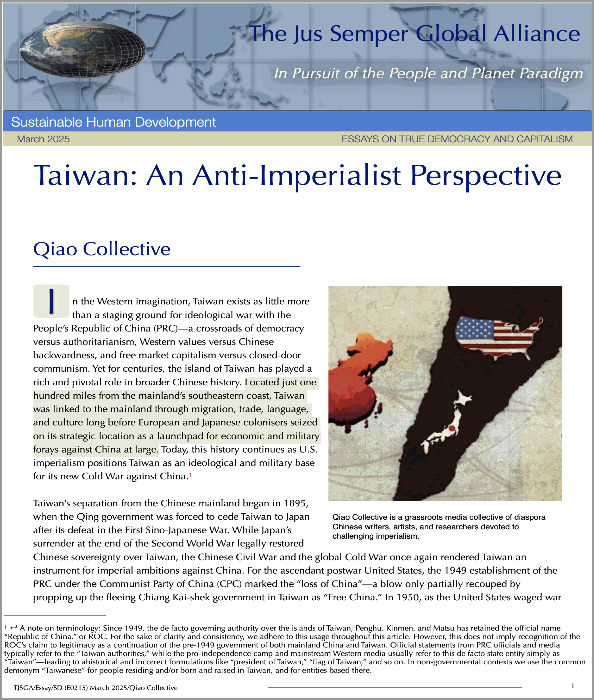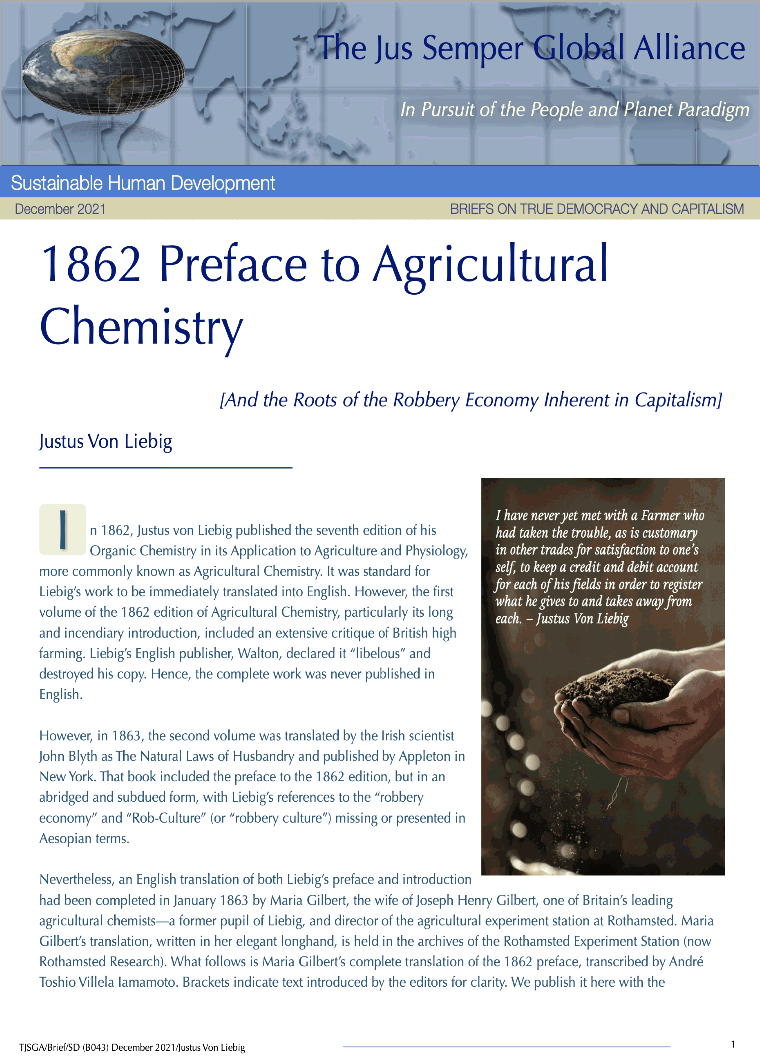Chemistry [And the Roots of the Robbery Economy Inherent in Capitalism]
Nevertheless, an English translation of both Liebig’s preface and introduction had been completed in January 1863 by Maria Gilbert, the wife of Joseph Henry Gilbert, one of Britain’s leading agricultural chemists—a former pupil of Liebig, and director of the agricultural experiment station at Rothamsted. Maria Gilbert’s translation, written in her elegant longhand, is held in the archives of the Rothamsted Experiment Station (now Rothamsted Research). What follows is Maria Gilbert’s complete translation of the 1862 preface, transcribed by André Toshio Villela Iamamoto. Brackets indicate text introduced by the editors for clarity. In the mid-nineteenth century, English agriculture was dominated by a system of large landowners receiving prodigious rents from numerous tenant farmers, each of whom usually worked less than fifty acres of land. Many of these tenants, while incorporating forms of crop rotation, were practical farmers, working out of tradition or following earlier practical guides to English husbandry as handed down by Sir Humphry Davy and others, and were reluctant to embrace scientific agricultural chemistry as it had developed by the mid-nineteenth century. Nevertheless, more and more agriculture was coming to be dominated by large landowners, who guided the operations. British agriculture was becoming increasingly intensive, importing large amounts of fertiliser and emphasising the maximum commercial output. This system of high farming was, in Liebig’s terms, an advanced “robbery economy.” All these concerns are thus reflected in his preface, designed to highlight the reasons for the polemic in his introduction and much of the rest of the work. Liebig had been writing of the robbery economy since the late 1850s, notably in his Letters on Modern Agriculture (1859). Concerns over English-style commercial and industrial agriculture and its extraction of fertiliser resources (bones, guano) from the rest of the world had increasingly come to dominate his thinking. As he notes in the preface, he had been “reproached on many sides for describing modern Agriculture as a system of Plunder/Robbery.” An example of such criticisms was the New York magazine The Cultivator, which in its January 1860 issue sharply criticised Liebig’s notion of a “robbery system,” declaring rather that “the soil is given to man to use. The materials from which it is made exist certainly in inexhaustible quantity, and for the most part the soil is inexhaustible.” It was in the face of such resistance that Liebig placed renewed emphasis on the growing problem of the robbery of the soil and the constant need for its replenishment through nutrient recycling. This is now understood as one of the great early developments in modern ecology, leading to the development of contemporary theories of soil metabolism. —John Bellamy Foster . For a full read of this essay, click here or on the picture to download the pdf file.
|

- © The Jus Semper Global Alliance
| Home |  | Resources |  | Economic Data |  | 1862 Preface to Agricultural Chemistry |


